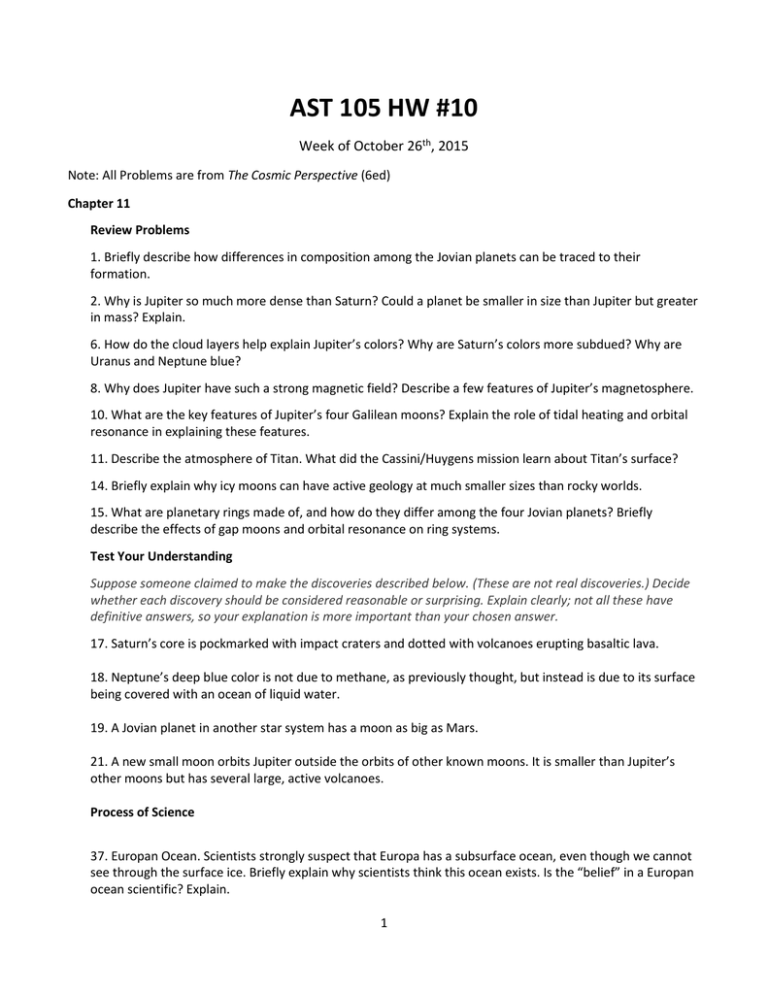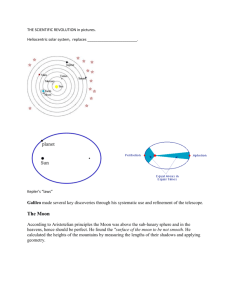AST 105 HW #10 Week of October 26 , 2015
advertisement

AST 105 HW #10 Week of October 26th, 2015 Note: All Problems are from The Cosmic Perspective (6ed) Chapter 11 Review Problems 1. Briefly describe how differences in composition among the Jovian planets can be traced to their formation. 2. Why is Jupiter so much more dense than Saturn? Could a planet be smaller in size than Jupiter but greater in mass? Explain. 6. How do the cloud layers help explain Jupiter’s colors? Why are Saturn’s colors more subdued? Why are Uranus and Neptune blue? 8. Why does Jupiter have such a strong magnetic field? Describe a few features of Jupiter’s magnetosphere. 10. What are the key features of Jupiter’s four Galilean moons? Explain the role of tidal heating and orbital resonance in explaining these features. 11. Describe the atmosphere of Titan. What did the Cassini/Huygens mission learn about Titan’s surface? 14. Briefly explain why icy moons can have active geology at much smaller sizes than rocky worlds. 15. What are planetary rings made of, and how do they differ among the four Jovian planets? Briefly describe the effects of gap moons and orbital resonance on ring systems. Test Your Understanding Suppose someone claimed to make the discoveries described below. (These are not real discoveries.) Decide whether each discovery should be considered reasonable or surprising. Explain clearly; not all these have definitive answers, so your explanation is more important than your chosen answer. 17. Saturn’s core is pockmarked with impact craters and dotted with volcanoes erupting basaltic lava. 18. Neptune’s deep blue color is not due to methane, as previously thought, but instead is due to its surface being covered with an ocean of liquid water. 19. A Jovian planet in another star system has a moon as big as Mars. 21. A new small moon orbits Jupiter outside the orbits of other known moons. It is smaller than Jupiter’s other moons but has several large, active volcanoes. Process of Science 37. Europan Ocean. Scientists strongly suspect that Europa has a subsurface ocean, even though we cannot see through the surface ice. Briefly explain why scientists think this ocean exists. Is the “belief” in a Europan ocean scientific? Explain. 1 38. Breaking the Rules. The geological “rules” for the terrestrial worlds tell us that a world as small as Io should not have any geological activity. However, the Voyager images of Io’s volcanoes proved that the old “rules” had been wrong. Based on your understanding of the nature of science, should this be seen as a failure in the process of the science? Defend your opinion. 2











